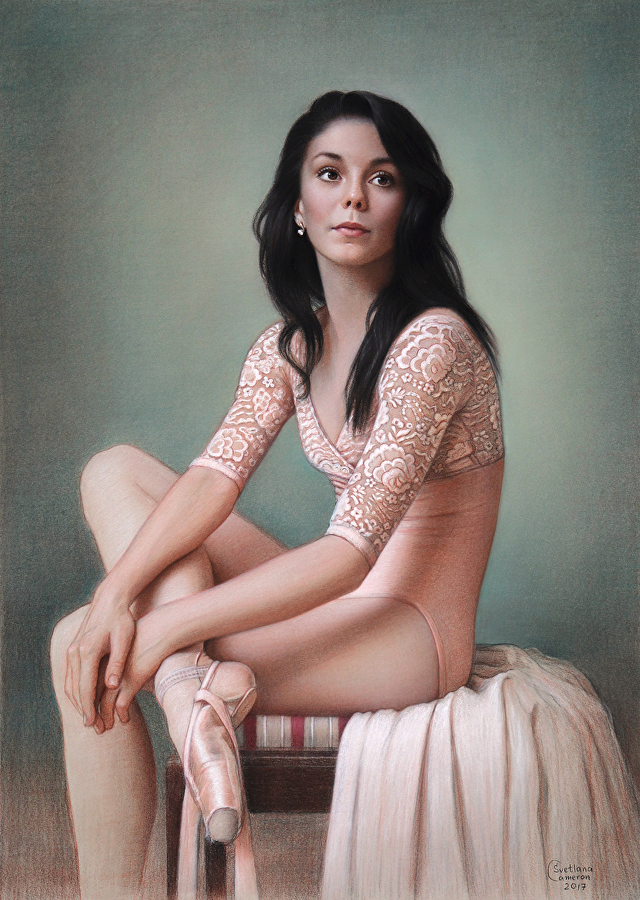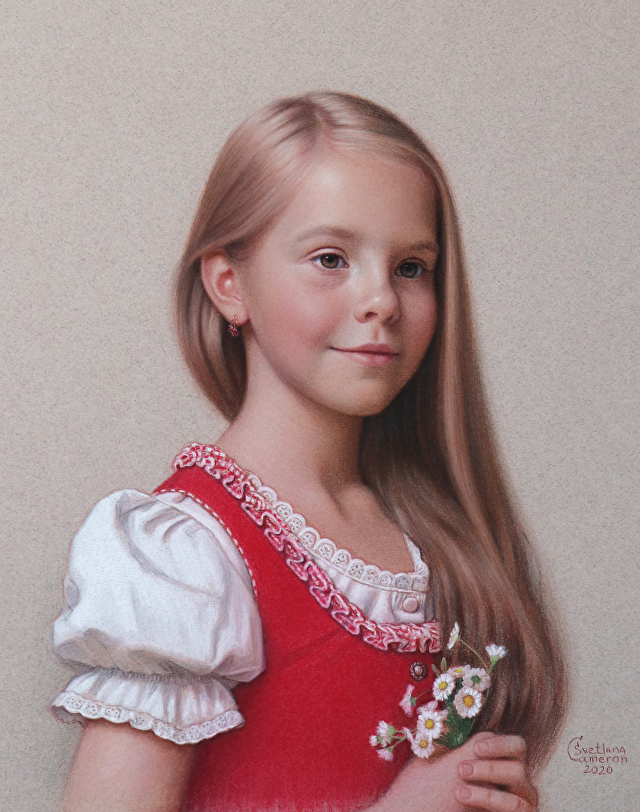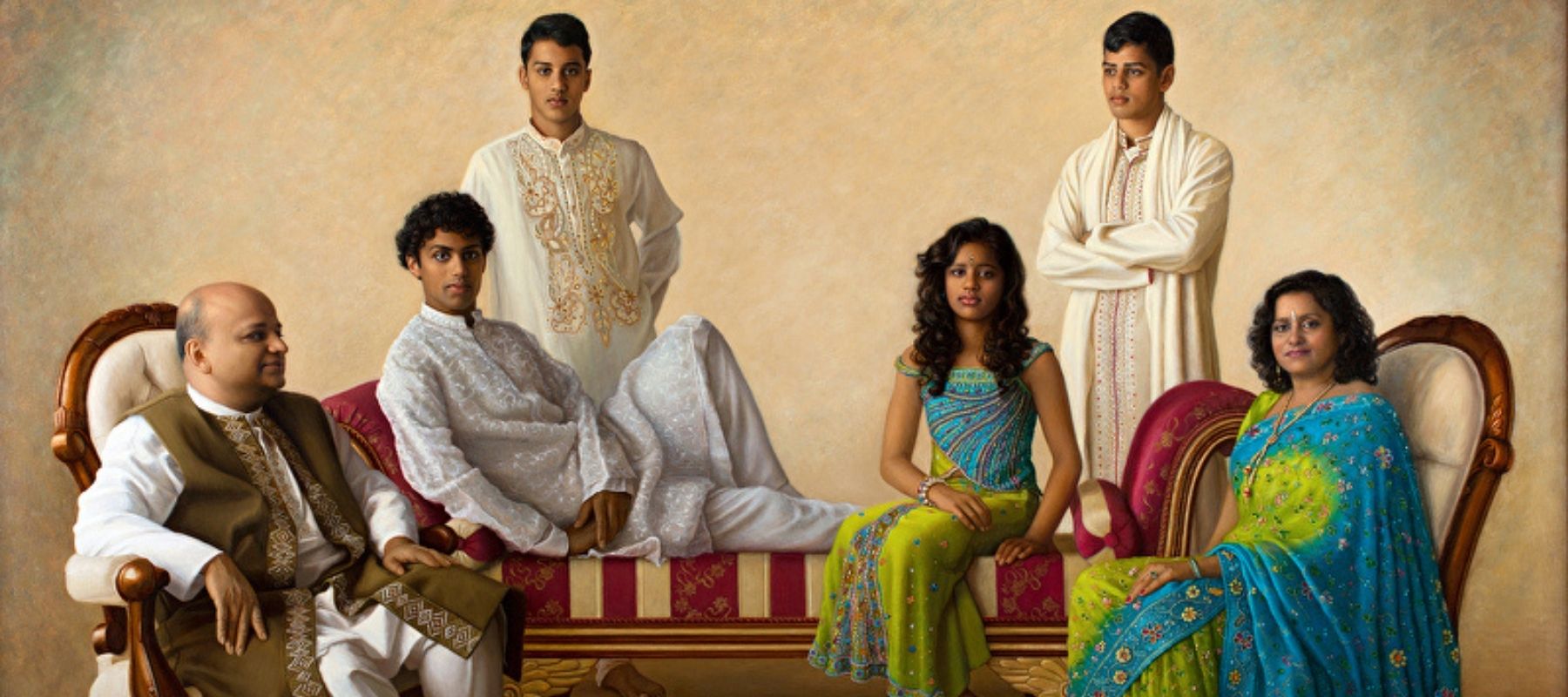Interview with Svetlana Cameron

Natalia Osipova, Principal of the Royal Ballet, Pastel on Paper, 70 cm x 50 cm
At what point did you decide that you had to be an artist?
I’ve always been drawn to all things creative, but initially did not plan to be an artist. I studied foreign languages and art history and briefly worked in museums and art galleries. In my mid-20s I enrolled in academic drawing and painting courses and travelled to Florence to learn Old Masters’ techniques. That experience was the point of no return.
Tell us about your creative process, how does it begin?

What is your favourite piece that you have created?
A very difficult question: it’s like asking a mum to pick her favourite child! My favourite pieces are those where the final result matched the idea I had in mind. Such blissful moments do not happen all the time. In fact, they are quite rare, leaving artists permanently slightly dissatisfied with their work. But that is good: it makes us strive for better results.
What do you like about the materials you use?
How do you want people to feel when they encounter your work?
The most precious moment for me is when people say: ‘You have painted more than a likeness, you have captured the character of this person. I can tell how he/she is feeling !’ That amazement is very rewarding and motivating: it makes all the hard work worthwhile.
Do you have a favourite artist or art style that inspires you?
I particularly love art of the Renaissance period and Dutch art of the Golden Age (17th Century). I also get inspired by the 19-century realism – it was a period when art became less academic and much closer to life in subject matter, but artists’ training was thorough and their skill and technique were still very strong.
What have you learnt about art from other artists?
Everything! All my tutors were practising artists. But if you are talking about more general things, I always learn to be more tolerant and open-minded when I communicate with other artists. It is important to discover what motivates them to create particular artworks in a particular style, before making judgements and jumping to conclusions.

The Patel Family, Oil on Canvas, 120 cm x 180 cm
What would the people who collect your art say about you?
People who commission and buy my artworks always comment on my personal approach, my ability to connect with people, and attention to detail I show in my artworks.
What does your day to day routine look like?
It varies depending on what keeps me busy on a particular day. I always get up early at about 6 am and try to clear the backlog of emails, messages and paperwork, so I can then concentrate on my studio work and not get distracted too much. Some days I draw and paint full time, other days I may have meetings and sittings. Sometimes I get busy with admin stuff or preparations for exhibitions and competitions. But no matter what exactly I do, running an art career remains a full-time job!
Describe your studio space, what makes it somewhere you can be creative?
I recently moved into a large studio and even have my own private exhibition space. But it has not been always like that! At the beginning of my career I worked from a corner of a living room, then from a small spare bedroom, then had my first detached studio. It was not large but had superb natural light, and I produced many successful artworks in it. Having a dedicated space and a good light are the two most important things, in my opinion.
What advice would you give to new artists who want to get their work out there?
Do not try to copy someone’s style or follow a trend if you do not feel truly passionate about it. Find the subject matter that moves you personally. Being genuine and sincere is the key to success, no matter what you do: people feel it on the subconscious level and are always drawn to passionate and dedicated artists, no matter what style they work in.
Check out more of her work here.
Svetlana Cameron is a Russian-British portrait artist dedicated to the revival and modern interpretation of traditional painting and drawing techniques. Trained in the methods of Old Masters in the private ateliers in Malta and Florence, Cameron specializes in portraiture in the style of Classical Realism. She is best known for her official portraits in the Flemish oil painting method, as well as delicate pastel drawings of children in her own original interpretation of the Renaissance ‘trois crayons’ technique.”
